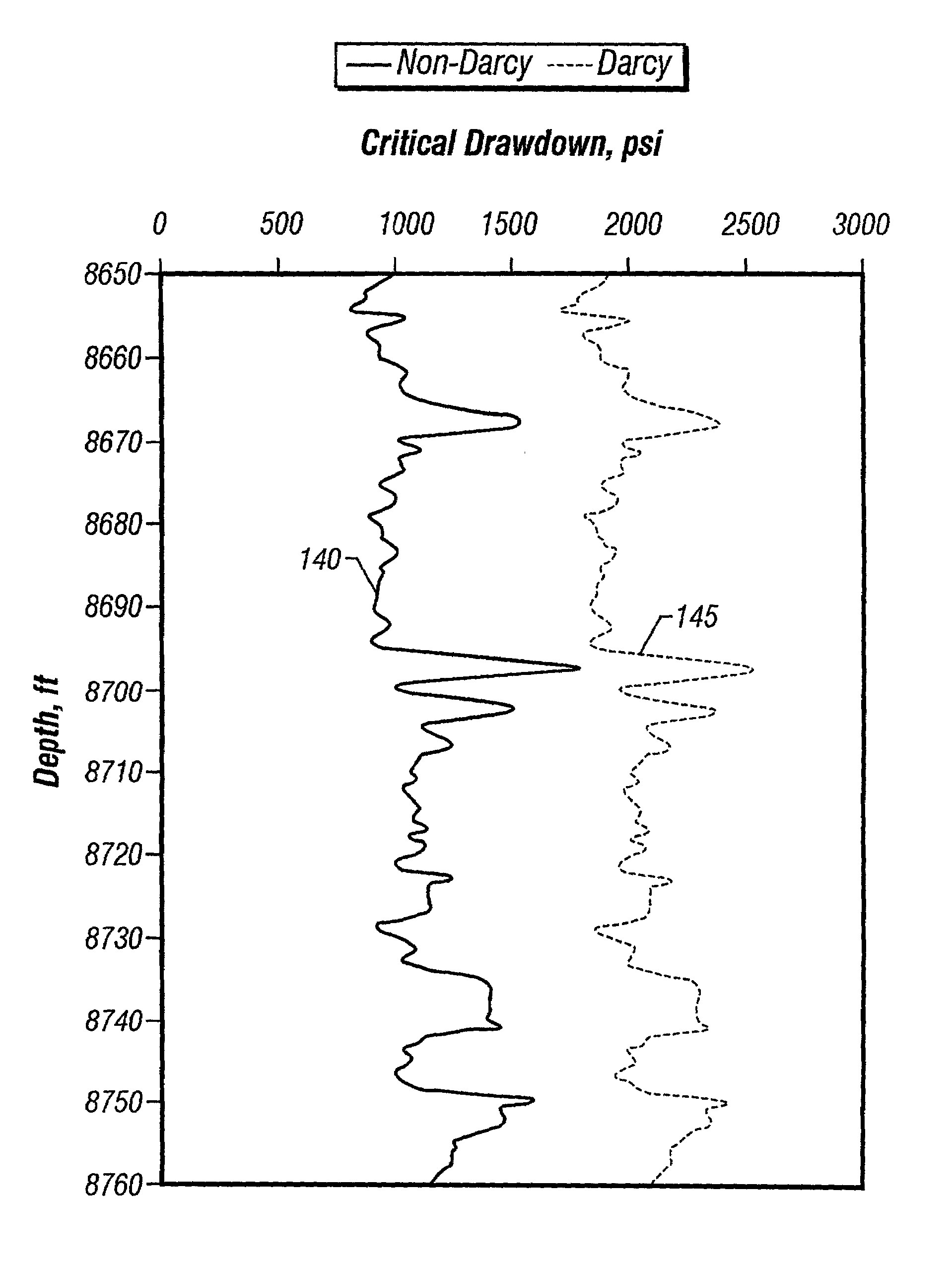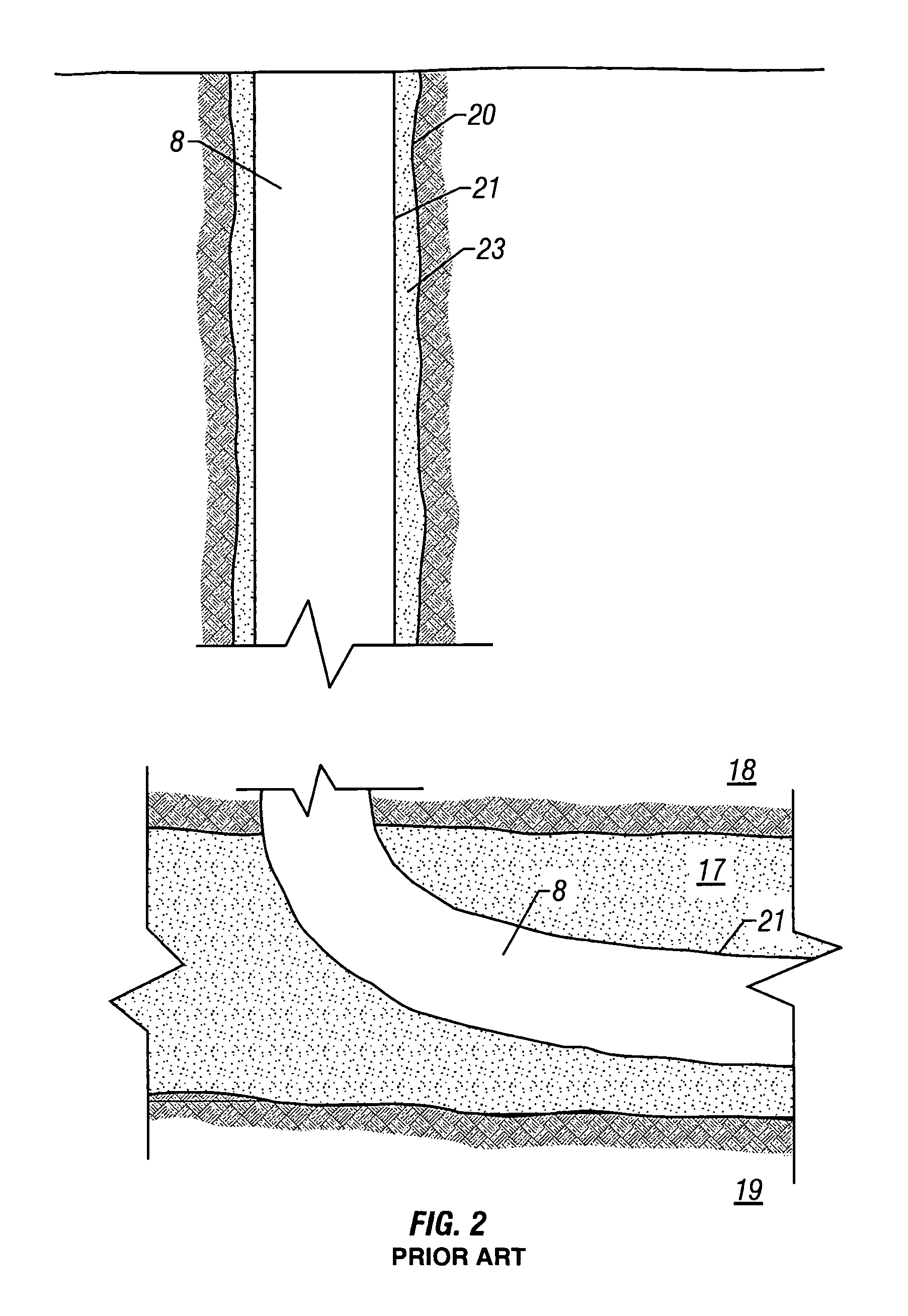Method of predicting the on-set of formation solid production in high-rate perforated and open hole gas wells
a gas well and perforation technology, applied in the field of completion of gas wells, can solve the problems of increasing completion costs, affecting the integrity of surface and downhole equipment, and posing extreme safety hazards
- Summary
- Abstract
- Description
- Claims
- Application Information
AI Technical Summary
Benefits of technology
Problems solved by technology
Method used
Image
Examples
application example
Horizontal Well
[0062]Horizontal and multilateral wells are fast becoming an industry standard for wellbore construction. Among the preferred completion methods for most horizontal wells are open-holes whose sand control consists of either slotted liners of pre-pack screens. For such a completion in a weak but competent formation, the bottomhole flowing pressure must be ascertained to stay above the value dictated by the formation's critical drawdown pressure, in order to minimize the potential of sand failure. The cylindrical cavity model (CDP-OH) can be used, assuming that the well is located in a homogeneous reservoir of height H and bounded by impermeable layers, as shown in FIG. 10. For such a configuration, the flow will be cylindrically symmetric up to the radial distance of roughly H / 2 and becomes uniform with increasing distance (>H / 2) from the wellbore: see Ramos, G. G., Katahara, K. W., Gray, J. D., and Knox, D. J. W.: “Sand Production in Vertical and Horizontal Wells in a...
PUM
 Login to View More
Login to View More Abstract
Description
Claims
Application Information
 Login to View More
Login to View More - R&D
- Intellectual Property
- Life Sciences
- Materials
- Tech Scout
- Unparalleled Data Quality
- Higher Quality Content
- 60% Fewer Hallucinations
Browse by: Latest US Patents, China's latest patents, Technical Efficacy Thesaurus, Application Domain, Technology Topic, Popular Technical Reports.
© 2025 PatSnap. All rights reserved.Legal|Privacy policy|Modern Slavery Act Transparency Statement|Sitemap|About US| Contact US: help@patsnap.com



